When PSB let us know back in 2022 that they were going to introduce a wireless bookshelf loudspeaker, we were incredibly enthusiastic about the news. If anyone could pull off an affordable (maybe) high-end wireless speaker that was supported with BluOS — it was Paul Barton.
Bluesound and PSB are both part of Lenbrook and he did play a major role in the development of their wireless products — but this new loudspeaker would be the first under the PSB brand.
We waited (and waited) for over a year for the new PSB Alpha iQ Loudspeakers to finally materialise; PSB rather kindly sent me one of the first with the Tangerine Yellow finish and I have been listening to it over the past week.

I was very honored to participate in the global launch of the PSB Synchrony Series as the host of the YouTube premiere and have been using the PSB Alpha P5 for almost 3 years in my bedroom system driven by the Cambridge Audio AXA35 Integrated Amplifier.
The powered version of the Alpha P5 offer a different approach to setting up a desktop or bookshelf system and there is a lot of technology under the hood.
The PSB Alpha iQ system consists of two powered speakers. One speaker serves as the primary with all of the needed connectivity and features, while the other speaker serves as the secondary. Audio signals are transferred from the primary to the secondary speaker wirelessly.
Both speakers house the amplification, so there is no need to connect the speakers to an additional amplifier, stereo, or home theater receiver. Both loudspeakers need to be plugged into a power receptacle.

BluOS 4.2.6 was just introduced and it features some changes that will allow users of TIDAL Connect to select FLAC Hi-Res files over MQA as the default setting.
Here’s what’s stated on the BluOS support website, “If tracks in TIDAL are available in both MQA and FLAC, the TIDAL app will offer you the FLAC version by default, and the MQA version will be inaccessible.”
In this scenario, the music isn’t gone, it’s hidden. However, BluOS users can still find and play back MQA-encoded music from TIDAL using the BluOS Controller App.
This feature provides both wireless app smartphone control as well as wireless streaming support and the ability to integrate the Alpha iQ into a BluOS wireless multi-room music setup.
BluOS allows wireless music/audio sharing with up to 63 other compatible wireless speakers and players.
The DAC offer 24-bit/192kHz support as well as full MQA decoding capability.

You can also use the Alpha iQ system in place of a soundbar for listening to audio from compatible TVs. Both eARC and ARC audio capabilities are supported.
The Alpha iQ also offers an MM phono stage for those who wish to connect their turntable.
PSB has also included a USB input which gives users the ability to play music files from a connected USB flash drive.
A dedicated subwoofer output allows connection to an external powered subwoofer for an even deeper bass experience. DSP-enabled low-pass and high-pass filters are provided.
The Alpha iQ system has built-in two-way Bluetooth, with aptX HD codec support for wireless streaming from any mobile device. You can also use Bluetooth to transmit audio to compatible headphones and playback devices

PSB Alpha iQ Specifications
- Speaker Type: (2) Powered Speakers with Rear ports (Two-way Bass Reflex Design)
- Tweeter (each speaker): 0.75-inch aluminum dome tweeter with neodymium magnet and ferrofluid cooling
- Woofer (each speaker): 4-inch polypropylene mid-bass driver with steel basket and rubber surround
- The Alpha iQ employs a DSP-based active crossover. The tweeter is placed below the woofer. This provides greater flexibility in listener position because the blend between the woofer and the tweeter remains consistent whether one is sitting or standing.
- Amplifier Type: Class D
- Amplifier Power (each speaker): 60 watts (Woofer), 30 watts (Tweeter) tweeter
- Wired Connectivity: MM (moving magnet) phono, HDMI eARC, digital optical, 3.5 mm auxiliary, and USB inputs. Subwoofer output.
- Wireless Connectivity: Built-in Wi-Fi for connection to a home network.
- Wired Ethernet connection
- Frequency Response: 64Hz to 20kHz (+/- 3dB On Axis)
- Low-Frequency Cutoff: 35Hz (-10db)
- BluOS Control App: (Android, iOS, Windows, macOS, Kindle)
- IR Learning: Select Universal remotes.
- Control System Compatibility: Control4, Crestron, ELAN, RTI, and URC
- Voice Control: Alexa, Google Assistant, and Apple Siri
- Onboard Control: Touch controls on the top of the primary speaker allow users to change the volume, pause and resume playback.
- Construction: MDF (Cabinet), MDF on Aluminum (Front Baffle), Aluminum (Rear Baffle)
- Dimensions (W x H x D for Each Speaker): 5 11/16 x 9 11/16 x 7 ⅝-inches (145 x 246 x 192mm)
- Weight: 7.36kg/16.2lbs (pair)

Listening
Before the PSB Alpha iQ replaced the Alpha P5 on my bedroom credenza, I did spend an hour listening to 3 of my playlists using TIDAL Connect and the Bluesound NODE which is connected to the aforementioned Cambridge AXA35.
The Bluesound/Cambridge combination has a decidedly warm tonal balance and one could not describe it as being overly detailed or forward sounding.
The Alpha P5 have a rather neutral tonal balance that can become somewhat more aggressive in the treble range; one shouldn’t take that comment as a dig at the otherwise punchy sounding Canuck loudspeakers.
The Alpha P5 prefer more power than less; which was also the case with the PSB Synchrony B600 that required my Cambridge Audio Edge A or the Vincent SV-737 Integrated Amplifiers to really open up in my 16′ x 13′ x 9′ listening room.
The Alpha iQ are a rear ported design and should not be placed too close to the wall behind them; those considering placement on a pair of bookshelves should make sure there is at least 4 to 5 inches of distance to avoid too much bass information off the wall in such tight quarters.
The quoted frequency response (64Hz to 20kHz, +/- 3dB On Axis) might be somewhat conservative because a number of frequency sweeps and bass demonstration tracks indicated that the Alpha iQ can play rather cleanly down to almost 45Hz and whilst the impact loses some its punch, users might be surprised just how well these loudspeakers can handle metal, electronic music, and large orchestral pieces.
The one caveat is that the PSB Alpha iQ reach a point where raising the volume any further serves no point. They hit a ceiling and that was certainly the case in my 16′ x 13′ x 9′ den.
Kept within those limitations, the Alpha iQ deliver a rather clean, detailed, and balanced sounding presentation that doesn’t really favour one genre of music over the other.
Both male and female vocals get pushed slightly forward of the instrumentation and with more than enough texture and detail to stand out.

Imaging is a definite strength so far with everything carved rather precisely in space, but the soundstage does not extend very far outside of the loudspeakers themselves; the Q Acoustics 5020 (which are passive) bookshelf loudspeakers run circles around the Alpha iQ in that regard with a extremely wide soundstage that extends to either side of the room.
How do they compare to something similar like the Triangle Borea BR03 BT?
The Alpha iQ and Borea BR03 BT both deliver deeper and more impactful bass response than one might expect considering the size of their drivers and enclosures.
The mid-bass performance of the Borea BR03 BT is firmer with greater tonal weight, whilst the Alpha iQ hits with more precision and speed.
Both loudspeakers exhibit a lively treble range which can be exacerbated by bright sounding recordings; neither loudspeaker is going to smooth things over and one has to decide for themselves which top end they prefer.
Inserting a subwoofer into the chain introduces a cut-off at 80Hz and that frees up the Alpha iQ to really let down its hair.
Because of what was in-house at the time, we did manage to experiment with subwoofers from Q Acoustics and Audioengine and the results confirmed a few things about the Alpha iQ that make me appreciate them even more.
Allowing both subwoofers to cover everything from 20Hz to 80Hz (which was more the case with the Q Acoustics subwoofer) created a scenario where the PSB delivered superior imaging, tighter low end response, and the midrange and lower treble were marginally more relaxed sounding, and also clearer.
The tonal balance did not shift because the amplifier’s impact remains the same and there is no magic button here to turn these into warmer sounding loudspeakers. If you like the neutral presentation of most PSB loudspeakers — the Alpha iQ will be your cup of tea.

Scream Queens?
But what about movies and TV shows? Having an HDMI eARC port made it simple to connect the Alpha iQ to my 65″ LG OLED TV and I decided to insert the aforementioned Q Acoustics subwoofer into the system to cover the bottom end and create a rather potent sounding 2.1 system.
Watching Andor, Fallout, and Scream Queens (guilty pleasure) was a blast through this system compared to some $1,000 soundbars that I have tried over the past few years; everything was more transparent sounding with far superior detail retrieval. The downside was that most content was limited to the space in-between the loudspeakers, but for shows that don’t have a lot of spatial effects, the clarity of the dialog was a trade-off I was willing to make.
The Q Acoustics subwoofer did add a great deal of low end impact and some additional warmth into the mix.
Are the PSB Alpha iQ dynamic sounding enough for a 2.0 HT/music system in a smaller space? I would still recommend adding a subwoofer if you plan on using these with movies and TV programming as well.
If you are considering a pair of high-end wireless loudspeakers in 2024 — the PSB Alpha iQ must be on your audition list if your listening space is a small to medium sized room.
Where to buy: $1,299 at Amazon | Crutchfield | PSB or $1,699 at Amazon.ca
Related Reading:














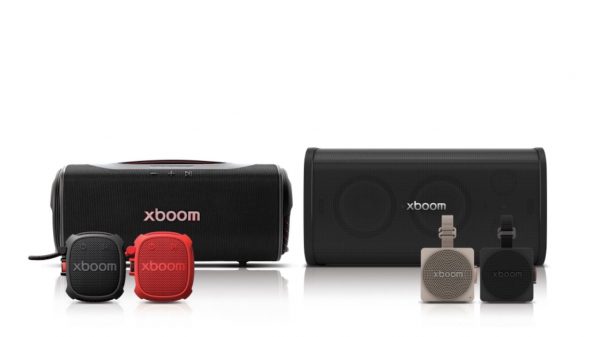






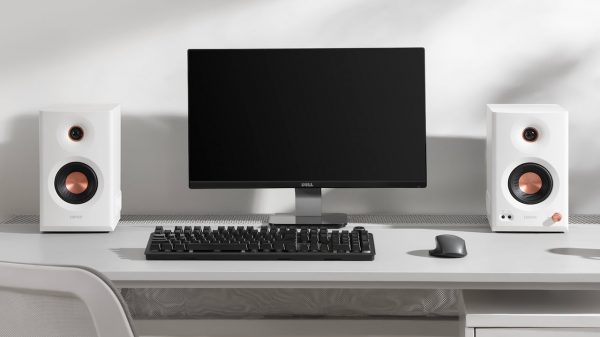
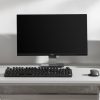
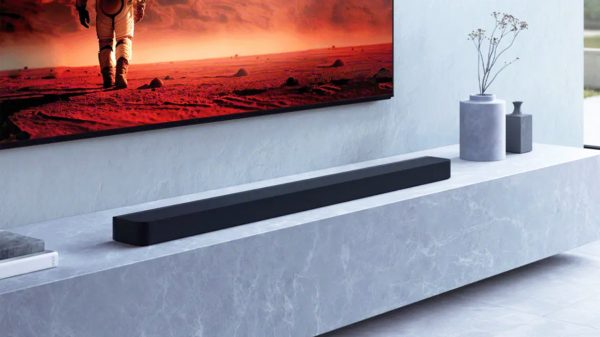
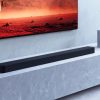











Mike Cornell
December 24, 2023 at 1:37 pm
These are definitely on my list but the extra treble energy concerns me. These were more expensive than the KEF LSX ii until PSB priced them more realistically….now they are a little more reasonable. In looking for a system to replace my ancient Harmon Kardon AVR / Mission m71 speakers / dbox sub in our living room, I’m torn between getting an integrated amp with HDMI-eArc and a pair of passive bookshelfs or going the high-end wireless route. Needs to be well-suited for movie/tv watching as well as music listening from our Apple TV / Apple Music. Room is about 12×18. Anyway, will keep the Alphas on my list until I get a chance to hear them. Happy Chanukah to you and your family, Ian in these difficult times.
Peace.
Andries Combrink
January 3, 2025 at 4:18 pm
Great review! Are the drivers in the Alpha IQ the same as in the Alpha P5? I have the NAD C316BEE v2 and the P5’s with the Wiim Pro Plus and the sound is very balanced when listening to music. This combination definately excel with Jazz and Singer Songwriter content. When playing movies using the TV optical out to the Wiim the bass is really impressive from the P5’s. I suspect the room definitely is to thank. One thing I am noticing is that sound from the TV via optical sounds very full and powerful compared to streaming services. Any idea why that is?
Ian White
January 3, 2025 at 7:58 pm
Andries,
Definitely using the same drivers with a possible modification in the tweeter. I still own a pair of the P5 and have driven it with the C 316BEE V2 on the desktop. I would have to compare the DAC inside the iQ to the WiiM to see if the chips are different. I suspect the Pro Plus has a better DAC. But also thinner sounding. The NAD has a warmer sounding mid bass and lower midrange which is definitely impacting the overall sound.
Will do some experiments and let you know if I discover anything.
Best,
IW
Andries Combrink
January 4, 2025 at 6:46 am
Thank you Ian! I’m really enjoying your content. Your review of the NAD C316BEEV2 put it on my radar.